Even small increases in vehicle speed significantly impact on road safety risks to yourself and others.
In South Australia, excess or inappropriate speed was identified as a contributing factor in an estimated 30% of all fatal crashes during the five year period of 2013 to 2017.
The impact of speeding on crash risk
Speeding:
- Doubles your risk of being involved in a collision with every 5km/h increase in speed
- Reduces the time you have to react and avoid a collision
- Lengthens your stopping distance
- Increases severity of injuries
A critical factor in the relationship between speed and crashes is stopping distance. There are two components to stopping distance:
- The distance travelled by the vehicle during the time it takes for the driver to react; and
- The distance travelled once the brakes have been applied.
The faster you are going, the further you will travel before you react and the longer it will take for your vehicle to stop.
Travelling at a higher speed means that a crash is more likely to happen. If a crash occurs at a higher speed, injuries will be more severe, and there is a greater risk of death.
When travelling 10km/h over the speed limit in a 60km/h speed zone, drivers are approximately 4 times more likely to be involved in a casualty crash, which is a similar risk to driving with a blood alcohol concentration of around 0.10 g/100ml, twice the legal limit.
 Speed camera program
Speed camera program
 How cameras work
How cameras work Camera locations
Camera locations Fines and penalties
Fines and penalties

